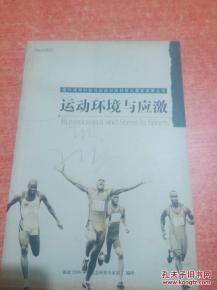国外体育旅游研究现状
Exploring Sports Landscapes: A Dive into Foreign Literature
Sports landscapes encompass a rich tapestry of elements, blending nature, infrastructure, culture, and human activity. Researchers worldwide delve deep into this dynamic domain, uncovering insights that shape our understanding of sports, recreation, and their impact on society. Let's embark on a journey through foreign literature to explore the nuances of sports landscapes.
Understanding Sports Landscapes
1.
Nature Integration in Sports Facilities
Research by Dr. Maria Fernandez (Spain) delves into how sports facilities can harmonize with natural environments. She emphasizes sustainable design principles, citing examples from Europe and Asia where sports venues seamlessly blend with green spaces.
2.
Cultural Significance of Sports Arenas
Dr. Takashi Yamamoto (Japan) explores the historical and cultural roots of sports arenas. His work highlights how traditional architecture and symbolism influence modern stadium design, fostering a sense of identity and community among sports enthusiasts.
Impact and Influence
1.
Social Dynamics in Recreational Spaces
Dr. Emily Roberts (USA) examines how sports landscapes facilitate social interactions. Her studies reveal that welldesigned parks and recreational areas promote inclusivity and encourage diverse communities to engage in physical activities.
2.
Economic Implications of Sports Tourism

Prof. Antoine Dubois (France) analyzes the economic benefits of sports tourism on local economies. Through case studies from major sporting events, he demonstrates how hosting such events can stimulate growth in hospitality, transportation, and retail sectors.
Trends and Innovations
1.
Technological Advancements in Sports Facilities
Dr. Hans Müller (Germany) investigates the integration of technology in sports landscapes. From smart stadiums to virtual training environments, his research outlines how innovations enhance both athlete performance and spectator experiences.
2.
Green Initiatives and Sustainable Practices
Prof. Elena Petrova (Russia) focuses on sustainability in sports infrastructure. Her work emphasizes the importance of ecofriendly designs, renewable energy sources, and waste management strategies in creating environmentally responsible sports landscapes.
Recommendations for Future Research
1.
CrossCultural Comparisons
Conduct comparative studies between different countries to understand how cultural factors influence sports landscape preferences and usage patterns.
2.
Longitudinal Impact Studies
Track the longterm effects of sports landscapes on public health, community cohesion, and environmental sustainability to inform urban planning and policy decisions.
3.
Innovative Design Strategies
Explore emerging design trends such as adaptive reuse of existing structures, green roofs, and multifunctional spaces to optimize the utility and aesthetic appeal of sports landscapes.
4.
UserCentric Approaches
Incorporate user feedback and participatory design methods to ensure that sports landscapes meet the diverse needs and preferences of athletes, spectators, and local residents.
In conclusion, the study of sports landscapes in foreign literature encompasses a multidisciplinary approach, intertwining environmental, social, cultural, and economic dimensions. By delving into these diverse perspectives and ongoing research endeavors, we can enrich our understanding of sports environments and pave the way for more inclusive, sustainable, and enjoyable recreational spaces globally.
体育资讯
MORE>-
09-20激战上海滩!上海申花VS广州恒大,绿茵对决,谁主沉浮?
-
09-20地震中的勇敢5岁男孩,救小猫的英勇之旅
-
09-20火拼雷霆!骑士铁血捍卫主场,雷霆新星对决詹姆斯的挑战
-
09-20回顾激战,2015年国王杯决赛的巅峰对决,荣耀与梦想交织的足球史诗
-
09-20激战牛城!火箭vs小牛,休斯顿复仇之战,巨头对决引领风暴!
-
09-20体图:药厂已列阿隆索替代者候选,明夏重建将靠维尔茨上亿转会费
-
09-20西甲风云武磊闪耀!西甲大名单发布,留洋新星期待闪耀新赛季
-
09-20罗体:因加蒂受伤,对阵那不勒斯时莫塔将让达尼洛首发出场
-
09-20女子双子宫怀龙凤胎,一边各住一个的传奇故事
-
09-202020欧冠八强激战,谁能问鼎欧洲之巅?——深度解析四场重量级对决
-
09-20台企金阿波罗老板被检方约谈事件
-
09-20美联储宣布降息50个基点
-
09-20前瞻足协杯决赛倒计时,热血对决,冠军争夺战即将上演!
-
09-20荣耀对决,2012年欧冠决赛的巅峰之战——揭秘那一年的足球传奇
-
09-19主场错失亚冠开门红,海港进球功臣波普谢场时满脸遗憾
- 搜索
- 最近发表
-
- 老师挪用学杂费买彩票事件
- 聚焦体育盛事热血青春,江西力量——探析江西本土体育文化的崛起与未来
- 泽林斯基:我们本可能战胜世界最强球队之一,很高兴完成欧冠首秀
- 激战上海滩!上海申花VS广州恒大,绿茵对决,谁主沉浮?
- 地震中的勇敢5岁男孩,救小猫的英勇之旅
- 欧冠首轮四大战役:豪门对决,黑马逆袭,谁将笑傲欧罗巴?
- 劳塔罗俱乐部和国家队连续场未进球,上次破门是美洲杯决赛
- 宁泽涛,泳坛闪耀的瞬间,退役背后的坚韧与抉择
- 出走的决心,近十年最佳女性题材影片
- 火拼雷霆!骑士铁血捍卫主场,雷霆新星对决詹姆斯的挑战
- 湖南一男子被同学驾车反复碾压致死
- 回顾激战,2015年国王杯决赛的巅峰对决,荣耀与梦想交织的足球史诗
- 男子60元买螃蟹20元是绳的故事
- 勒诺尔芒:相比西甲更想赢得欧冠;防亚马尔比防尼科难
- 巅峰对决!丹麦对英格兰,激情欧洲杯的火花碰撞!
- 半熟男女,炼爱局今日开播
- 已确认:郑钦文出战!
- 激战牛城!火箭vs小牛,休斯顿复仇之战,巨头对决引领风暴!
- 体图:药厂已列阿隆索替代者候选,明夏重建将靠维尔茨上亿转会费
- 皮肤饥饿症,4岁男孩的困境与希望
- 标签列表
-
- 世界杯和欧洲杯哪个含金量高 (9)
- 欧洲杯一共多少球队 (11)
- 2024欧洲杯主办城市 (12)
- 2024欧洲杯比赛时间 (19)
- 欧洲杯在哪竞猜 (13)
- 欧洲杯哪只球队先开球 (11)
- 欧洲杯哪个球队身价最高 (10)
- 欧洲杯有多少只球队参加 (15)
- 参加欧洲杯最多的球员 (11)
- 欧洲杯为什么没有直播 (13)
- 2024欧洲杯百度百科 (14)
- 欧洲杯哪个队最有可能进决赛 (11)
- 2024年欧洲杯预选赛 (16)
- 欧洲杯为什么没有中国 (12)
- 欧洲杯共多少场比赛 (12)
- 欧洲杯都有哪些球队参加 (10)
- 2024欧洲杯参赛队伍有多少个 (10)
- 在哪里可以看欧洲杯预选赛 (13)
- 欧洲杯一场比赛时间多长 (10)
- 欧洲杯参赛球队有几支 (11)
- 欧洲杯一场多少人 (11)
- 直播app (10)
- 直播吧 (18)
- 直播吧官网 (11)
- 直播 (11)




